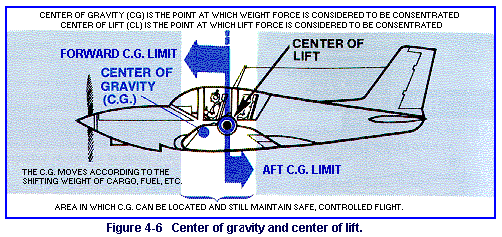 |
|||||
| Home | Research | For Teachers | HISTORY Level 1 Level 2 Level 3 |
PRINCIPLES Level 1 Level 2 Level 3 |
CAREER Level 1 Level 2 Level 3 |
| Gallery | Hot Links | What's New! | |||
| Web Administration and Tools | |||||
 |
|||||
| Home | Research | For Teachers | HISTORY Level 1 Level 2 Level 3 |
PRINCIPLES Level 1 Level 2 Level 3 |
CAREER Level 1 Level 2 Level 3 |
| Gallery | Hot Links | What's New! | |||
| Web Administration and Tools | |||||
![]()
With these two forces in opposition to each other, it is obvious that increased lift and decreased weight are objectives in both the designing and flying of aircraft.
Induced lift can be increased, as has been mentioned before, by changing the camber, or curvature, of the airfoil. Work continues in an effort to achieve the most efficient designs possible. But more important, at least to the person who is flying an airplane, is the angle of the airfoil as it encounters the relative wind (angle of attack). As indicated earlier, lift is increased as the angle of attack is increased because there is more relative wind striking the airfoil's bottom surface, creating higher pressure. There is also an increase in the induced lift, because at a higher angle of attack the air has to travel even farther over the top surface of the wing.
There is a point in this relationship of airfoil to angle of attack where lift is destroyed and the force of gravity (weight) takes command. This is called stall. The air can no longer flow smoothly over the wing's upper surface. Instead, the air burbles over the wing and lift is lost. You might wonder why the force of power from the engine can't take the place of the loss of lift from the airfoil. Very simply, there just isn't enough of this force available from a conventional aircraft's engine. Some of the more powerful jet fighters and acrobatic sport airplanes can, for a short time and distance, climb straight up without any significant help from their airfoils. However, these airplanes will eventually stall and start to fall toward Earth. The stalled condition is one from which recovery (and continued flight) is fairly easy.
At this point, we should mention another situation where lift can no longer overcome weight. No matter how efficient the airfoils and power plant of an aircraft may be, there is still a limit as to how high in the atmosphere it can go. This limit is called the aircraft's ceiling. At its ceiling, the aircraft's power plant is producing all possible power, and the airfoils are producing all possible lift just to equal the force of the aircraft's weight. Why? The atmosphere, you will remember, becomes less and less dense as altitude increases. The aircraft's ceiling is that point in the atmosphere where the air is too thin to allow further increase in lift.
Since weight is a problem to be overcome when we speak of lift, how do we manage the weight problem? First of all, the airplane must be constructed of the lightest-weight materials that can be used according to the type flying for which the airplane is designed. Today, most airplanes are built of metal, with aluminum alloy being used extensively because of its strength and light weight.
The weight of the load the airplane carries also receives very careful consideration. Each airplane has a total weight limitation called maximum gross weight, above which the airplane is unsafe for flight. It is possible to keep putting luggage or other cargo into an airplane until it is so heavy it will not fly. Since the pilot cannot put the airplane on a scale to make sure it doesn't exceed the maximum gross weight, another approach must be used. This involves computations that were begun during the design and testing of the airplane since the maximum gross weight is established by the manufacturer. Then, as each airplane is completed, it is weighed at the assembly plant and this weight is entered in certain documents (which must remain with the airplane at all times) as the empty weight. Thus, the difference between empty weight and maximum gross weight tells the pilot how much weight can be put in the airplane without overloading. Incidentally, this amount of weight is called useful load.

Where the weight is placed in the airplane is another factor that has a pronounced effect on how well the airplane will fly. This is because the center of gravity (CG) of the airplane must be maintained within certain limits prescribed by the manufacturer. The CG of an aircraft is the point where all of the weight of the aircraft is considered to be located (see figure 4-6). In order for the aircraft to be flown safely, the CG must be kept within certain limits with relationship to the center of lift (CL). The center of lift is the point at which all of the lift on the aircraft is considered to be concentrated. Notice in Figure 4-6 that there is a forward and an aft CG limit. If the CG gets too far forward or too far aft of the CL the aircraft will be out of balance and difficult, if not impossible, to control.
Send all comments to ![]() aeromaster@eng.fiu.edu
aeromaster@eng.fiu.edu
© 1995-98 ALLSTAR Network. All rights reserved worldwide.
| Funded in part by | From Civil Air Patrol Educational Materials |
Updated: February 23, 1999